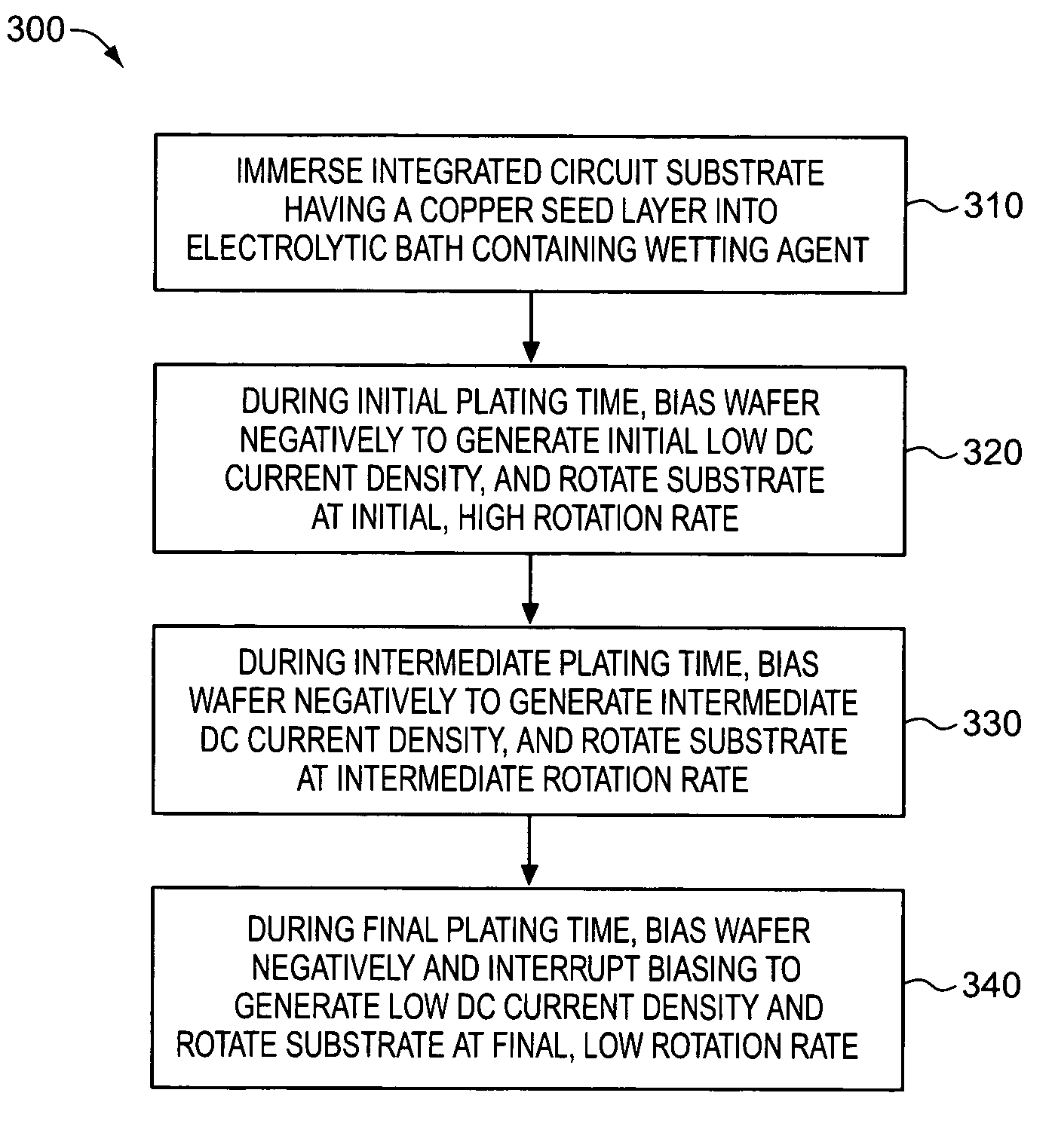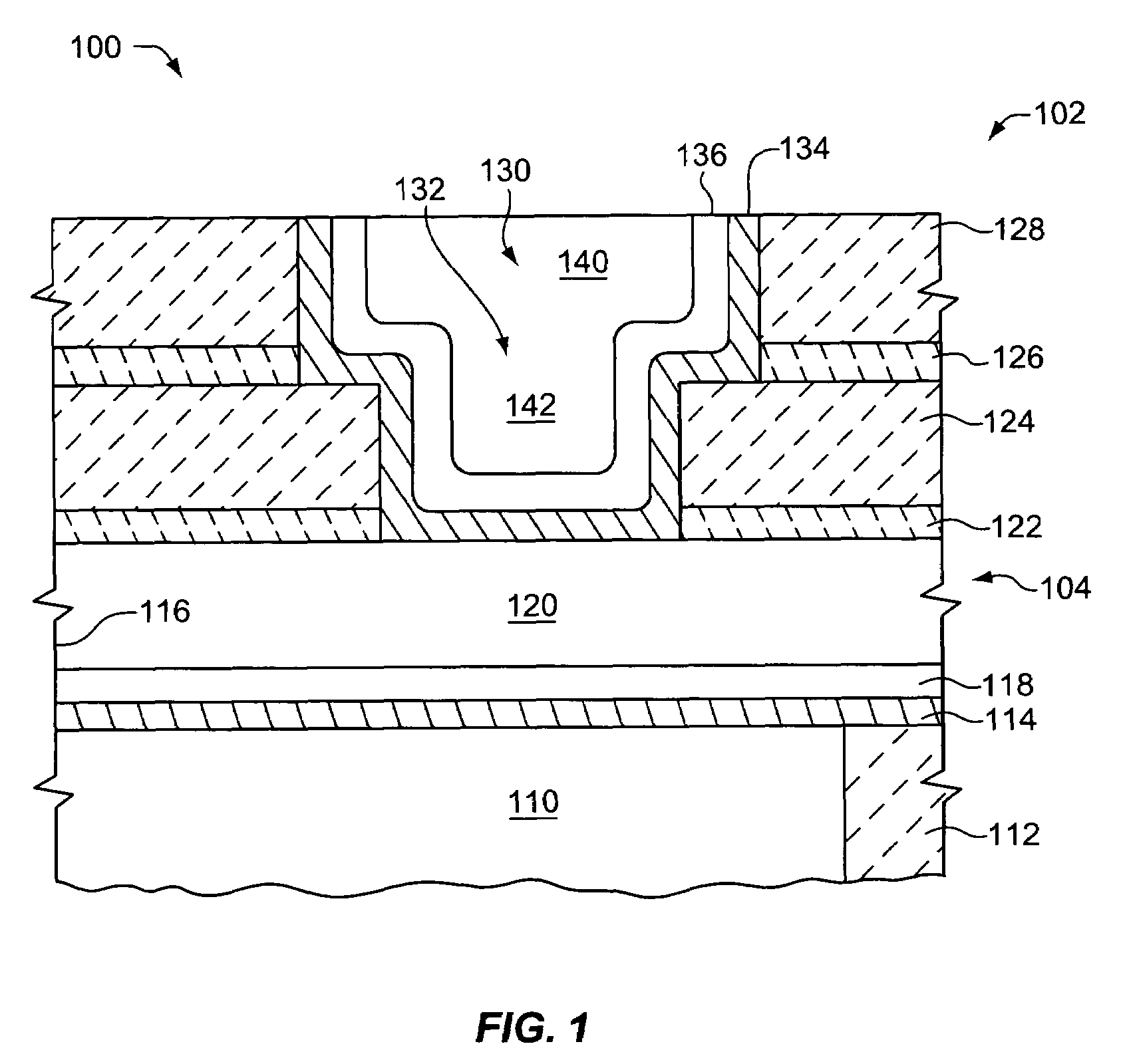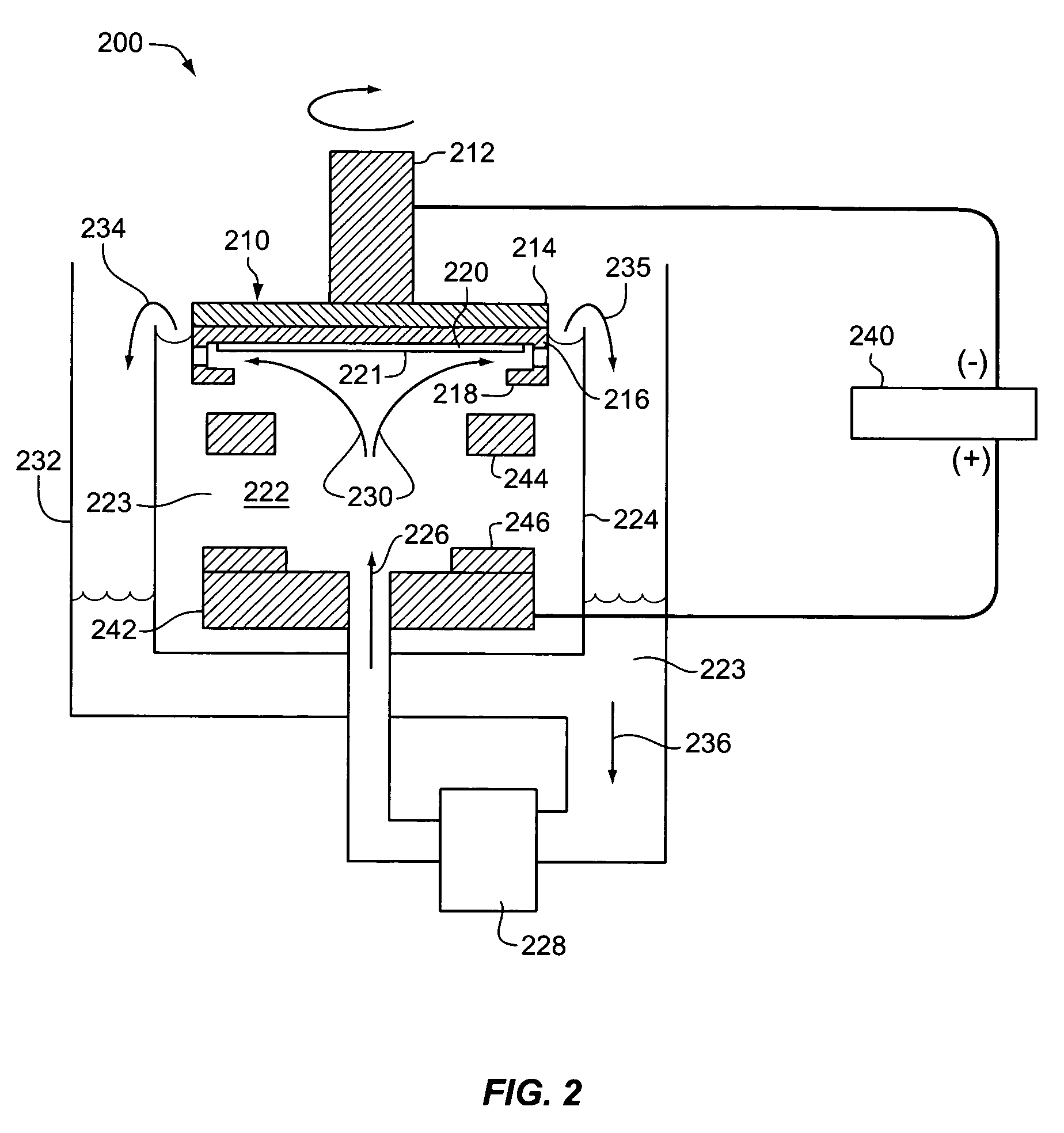Electroplating bath containing wetting agent for defect reduction
a technology of wetting agent and electrodelating bath, which is applied in the direction of basic electric elements, semiconductor/solid-state device manufacturing, electric apparatus, etc., can solve the problems of voids, pits, craters, and new device-killing defects in the electroplating layer, and improve the appearance of deposits. , the effect of reducing the pit defects of the electroplating layer
- Summary
- Abstract
- Description
- Claims
- Application Information
AI Technical Summary
Benefits of technology
Problems solved by technology
Method used
Image
Examples
example 1
[0050]A Novellus Model SABRE® xT apparatus was used to electroplate copper on integrated circuit substrate wafers using various electroplating solutions containing different amounts of BASF PLURONIC® P104 (“P104”) wetting agent. Copper was electroplated on a series of 200 mm silicon wafers having a PVD copper seed layer with a thickness of approximately 100 nm. Process specifications of a standard SABRE® xT copper DC electrofill process are known in the art.
[0051]Each of five plating solutions contained: 40 g / l of dissolved copper metal, added as copper sulfate pentahydrate (CuSO4·5H2O); 10 g / l H2SO4; 50 mg / l chloride ion, added as HCl; 6 ml / l VIAFORM® accelerator; 2.5 ml / l VIAFORM® leveler; and 2 ml / l VIAFORM® suppressor. In addition, the five different plating solutions comprised a concentration of P104 corresponding to 0, 10, 50, 80, and 100 ppm, respectively. The VIAFORM® accelerator, suppressor, and leveler are commercially available from Enthone Company. PLURONIC® P104 is comm...
example 2
[0056]The effectiveness of plating solutions in accordance with the invention in reducing lines of pits on wafers was studied. Three different plating solutions having compositions similar to those in Example 1 were prepared, except that the concentrations of P104 were 0, 100 and 200 ppm, respectively. A series of 200 mm silicon wafers having a PVD copper seed layer with a thickness of approximately 100 nm were etched with 10% sulfuric acid solution prior to electroplating. The etching with sulfuric acid, and other similar etching techniques, typically creates lines of pit defects under conventional operating conditions. Each of the three plating solutions was used to deposit copper on three different wafers, so that copper was electroplated on a total of nine wafers. Electroplating conditions and techniques essentially identical to those used in Example 1 were utilized.
[0057]After electroplating, the wafers were examined for defects using KLA Tencor AIT II metrology tool and visual...
example 3
[0058]The impact of using a plating solution in accordance with the invention on trench-filling ability was evaluated. A conventional plating solution having a composition similar to those in Example 1 had a composition of 0 ppm P104. A plating solution in accordance with the invention contained 200 ppm P104. A series of 200 mm silicon wafers were prepared to contain trenches having a width of either 0.2 μm or 0.3 μm and an aspect ratio of approximately 4 and 2.7, respectively. A PVD copper seed layer with a thickness of approximately 100 covered the surfaces of each wafer. Each of the two plating solutions was used to deposit copper on a wafer having a 0.2 μm or 0.3 μm trenches. Electroplating conditions and techniques essentially identical to those used in Example 1 were utilized. No degradation of electroplating trench-filling performance was observed on any of the wafers on which copper was deposited using the plating solution in accordance with the invention.
PUM
| Property | Measurement | Unit |
|---|---|---|
| concentration | aaaaa | aaaaa |
| concentration | aaaaa | aaaaa |
| cloud-point temperature | aaaaa | aaaaa |
Abstract
Description
Claims
Application Information
 Login to View More
Login to View More - R&D
- Intellectual Property
- Life Sciences
- Materials
- Tech Scout
- Unparalleled Data Quality
- Higher Quality Content
- 60% Fewer Hallucinations
Browse by: Latest US Patents, China's latest patents, Technical Efficacy Thesaurus, Application Domain, Technology Topic, Popular Technical Reports.
© 2025 PatSnap. All rights reserved.Legal|Privacy policy|Modern Slavery Act Transparency Statement|Sitemap|About US| Contact US: help@patsnap.com



